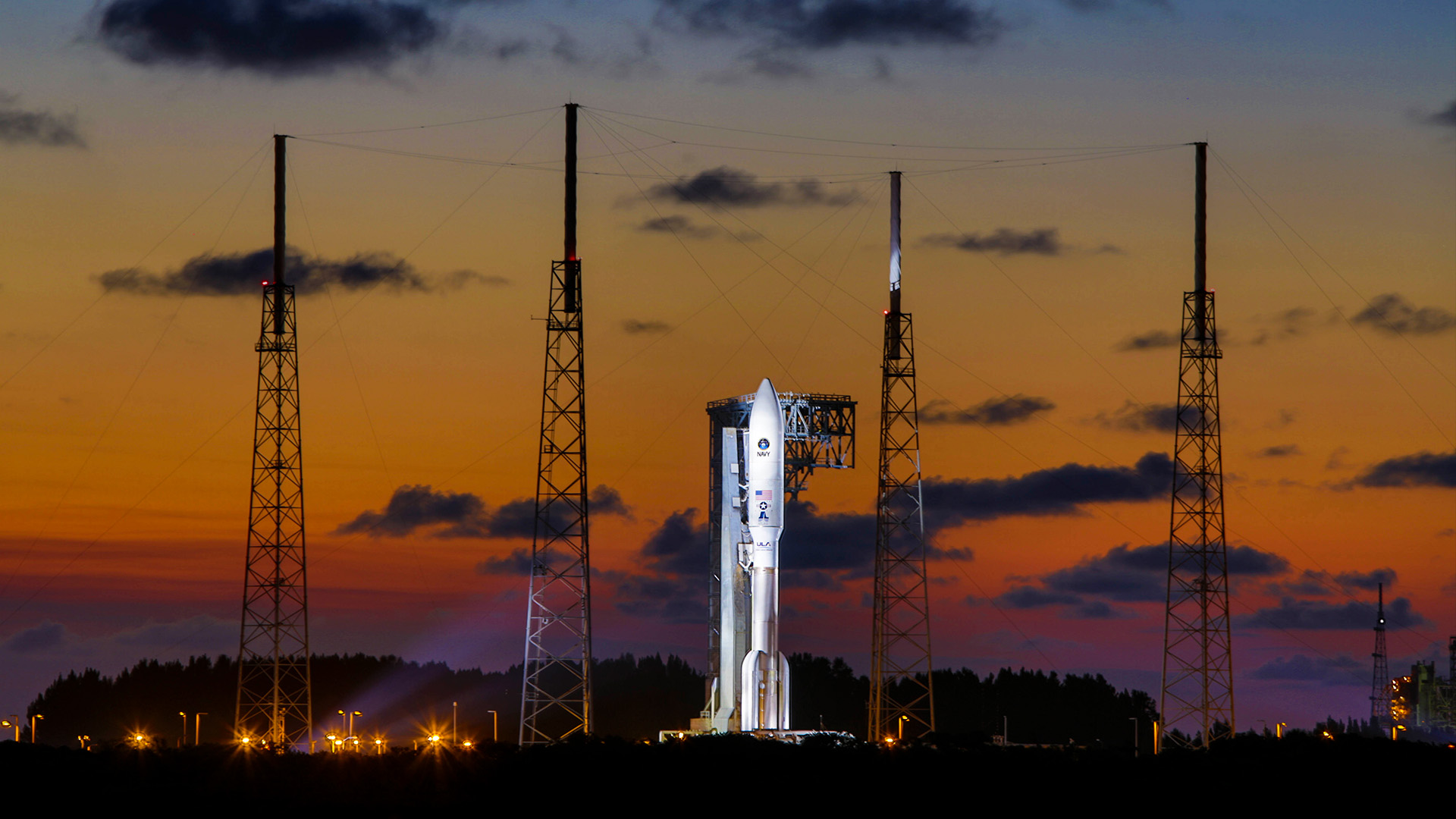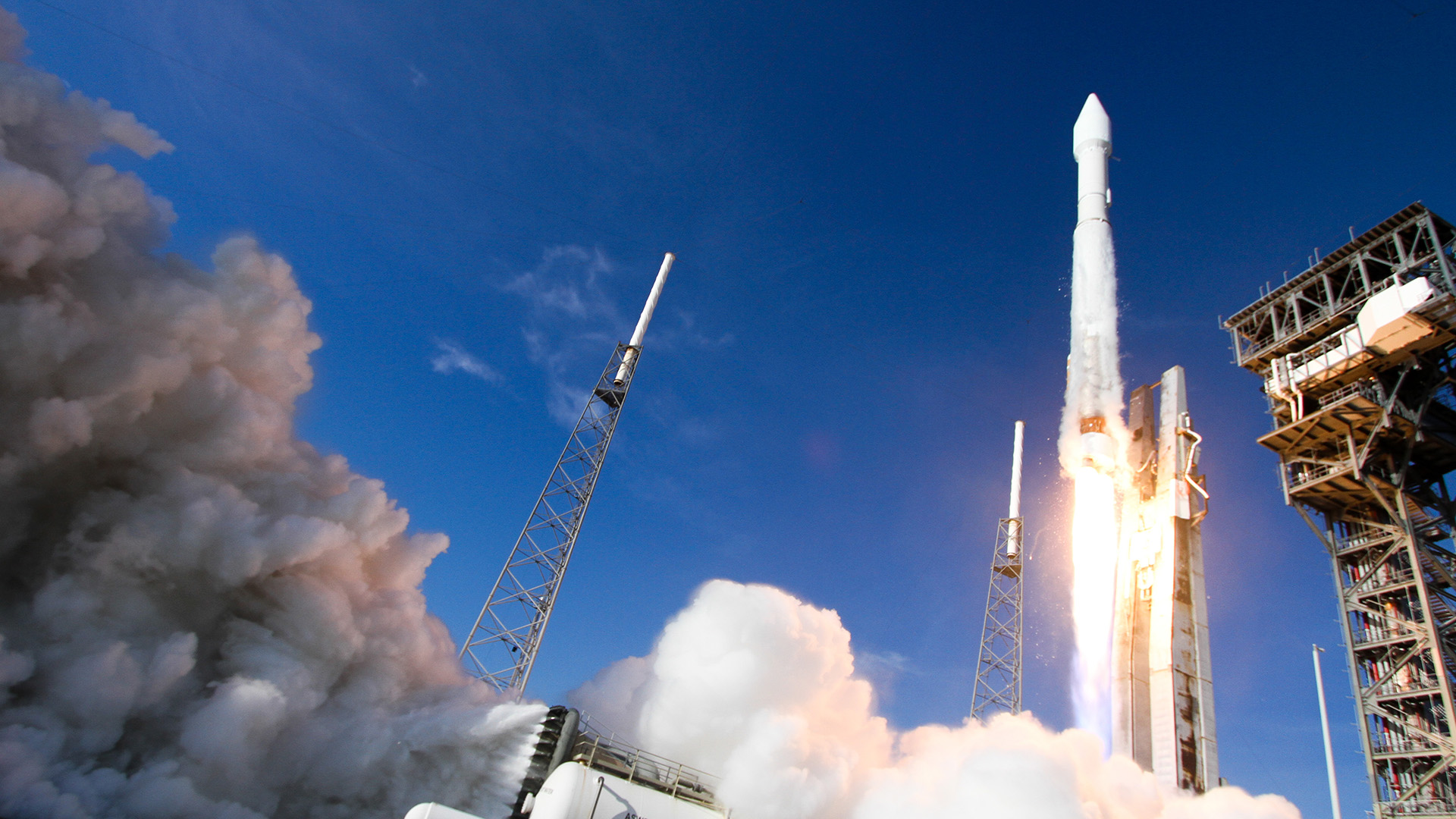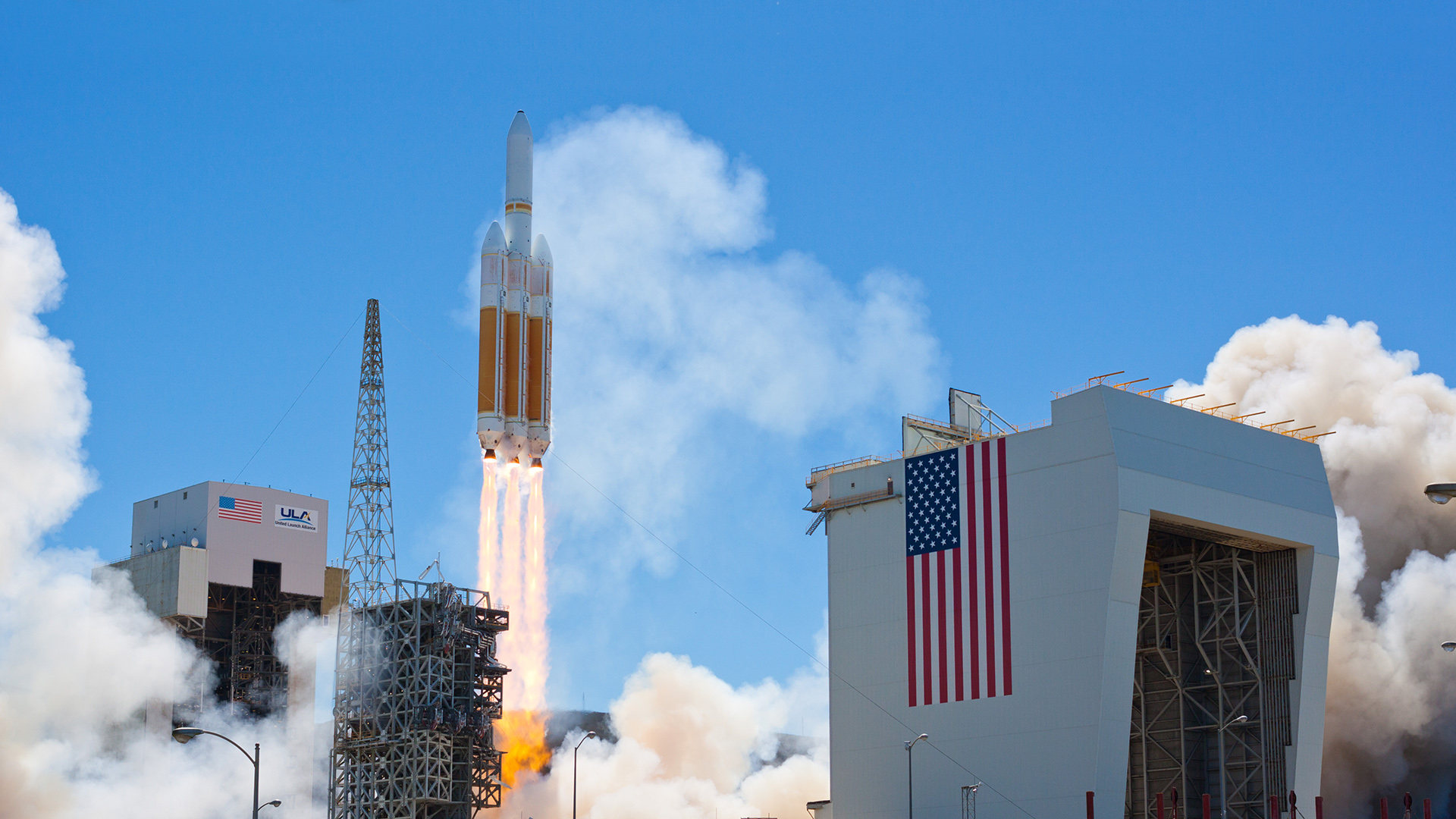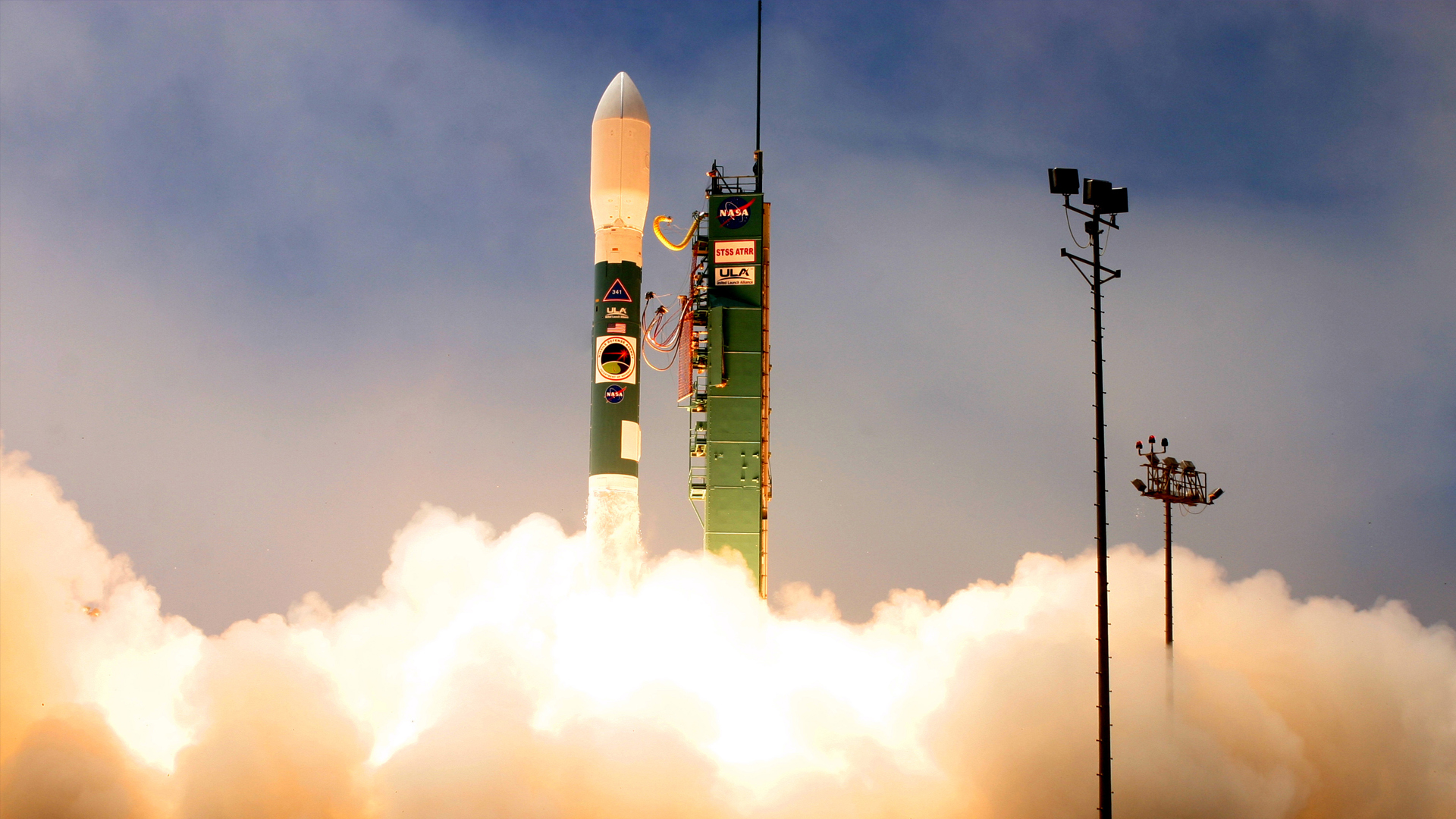Missions
Next LaunchUnited Launch Alliance Successfully Launches First USAF Atlas V
Atlas V Deploys Six Satellites in Support of Space Test Program
Atlas V STP-1 Mission Booklet
Cape Canaveral, Fla., (March 8, 2007) - A United Launch Alliance Atlas V rocket successfully launched six satellites at 10:10 p.m., EST, for the U.S. Air Force, marking the first use of the Atlas for an Evolved Expendable Launch Vehicle (EELV) program mission. Known as Space Test Program-1, the mission deployed the six satellites into two different low-Earth orbits.
"This was our ninth successful Atlas V launch and first ULA Atlas launch, but more importantly, it was the first EELV Atlas launch for the Air Force," said Michael Gass, ULA President and Chief Executive Officer. "This is a proud moment in our company's history and a significant step forward in providing our nation assured access to space using the most cost-effective means possible."
The mission used the new EELV Secondary Payload Adapter -- or ESPA -- which is designed to integrate multiple smaller satellites on the two EELV-class rockets. The six satellites on this mission were delivered into two distinctly different orbits.
"STP-1 required an extraordinary level of coordination and innovation to achieve the mission requirements," said Jim Sponnick, ULA vice president of Atlas programs. "One of those innovations was the mission design to achieve the two mission orbits, which was enabled by the development of a very flexible new guidance design. The fact that the Atlas system performed so well tonight in delivering the six satellites to their prescribed orbits is a tribute to the teamwork between our Air Force customer, the Space Development & Test Wing, and men and women of the ULA team, including our suppliers from around the world."
The multiple-payload mission included Orbital Express with its two-satellite configuration and the four ESPA-class satellites. Orbital Express was provided by the Defense Advanced Research Projects Agency (DARPA) and is designed to validate the technical feasibility of robotic, autonomous on-orbit refueling and reconfiguration of satellites for future national security and commercial space programs.
The other four satellites:
-- MidSTAR-1-1, built by the U.S. Naval Academy.
-- STPSat-1, built by Aero Astro for the Space Test Program.
-- Cibola Flight Experience, built by Surrey Satellite Technology Limited
(SSTL) for Los Alamos National Laboratory.
-- FalconSAT-3, built by the U.S. Air Force Academy.
Overall integration of the mission was provided by The Boeing Company.
The mission was launched aboard an Atlas V 401 configuration, which uses a single common core booster powered by the RD-180 engine. This Atlas V flight marked the 201st RD-180 firing. Including test firings, the Atlas RD-180 engine has operated for more than 37,000 seconds, or the equivalent of 151 launches. The Atlas V system has eight previous successful launches, including two missions for NASA and six for commercial customers.
Formed in 2006, ULA combines the successful Delta and Atlas expendable launch vehicle programs to offer cost-effective and reliable launch services to U.S. government customers, including the Department of Defense, NASA, the National Reconnaissance Office and other organizations. ULA program management, engineering, test and mission support functions are headquartered in Denver, Colo. Manufacturing, assembly and integration operations are located at Decatur, Ala. and Harlingen, Tex. Launch operations are located at Cape Canaveral Air Force Station, Fla., and at Vandenberg Air Force Base, Calif.





